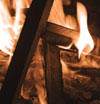

The fire industry is a crucial component of the security market, yet the local industry is still fighting to establish enforceable standards and certification among its installers and integrators. The problem isn’t a lack of standards, but rather a lack of the ability to enforce standards.
This is in the process of changing, but who knows how long it will take to hit the market.
In the meanwhile, Hi-Tech Security Solutions asked a few industry players for their take on what makes for a good fire evaluation.
Hi-Tech Security Solutions: What are the best practices when it comes to fire evaluations and assessments?
Nick Collins, Detection Design: The best practice regarding fire detection and suppression installation is to make use of an independent assessor or inspector. The person should be competent as well as knowledgeable of the relevant fire detection and suppression SANS standards/codes of practice.
Shane G Payne, Sizanane:
* Understand the business and identify the risk,
* Specify loss/risk and vulnerabilities,
* Establish the probability of loss/risk and the frequency,
* Determine the impact if possible (usually worst case scenario),
* Offer options to mitigate risks if practical,
* Study the feasibility of implementing the options, and
* Perform a cost/benefit analysis.
HSS: Who is qualified to conduct evaluations? Who manages these qualifications?
Collins: According to SANS 10400 (National Building Regulations) Section T Annexure B. refers to Competent Person (Fire Engineering). Competent Person would refer to a person or body within the industry that is knowledgeable. SANS 10139 is the code of practice pertaining to the installation of fire detection and alarm systems. This standard gives an in-depth guideline on how an installation should be conducted. However, it should be noted that additional standards will be required for different types of installation, but always used in conjunction with SANS 10139.
Payne: I feel that reputable fire consultants and certain electrical engineers are more than qualified. There are a number of qualified installers and installation companies that are qualified to perform this assessment. The FDIA’s code of ethics states the following: “As individuals and companies engaged in the fire detection, and gaseous extinguishing industry, we recognise our responsibility to maintain high standards of reliability and integrity in the application of the life safety and property protection systems provided by us”.
The FDIA has been trying to regulate the industry since it was established in June 1999 and has proposed various ways of obtaining a recognised qualification and is actively pursuing this in an effort to get it accepted, which will result in accreditation and qualifications.
HSS: What should the outcomes of an evaluation be?
Collins: The outcomes of an evaluation should be compliance with:
* SANS 10400.
* SANS 10139.
* A specification.
* Rational design.
* Client’s requirements.
Payne: To eliminate or reduce the risk substantially. To protect a company’s most valuable resource, people foremost and assets secondly.
HSS: What standards are available/enforceable in terms of fire evaluations?
Collins: As indicated above, to name a few. Only SANS 10400 is a legal requirement, all other SANS are codes of practice and are recommended.
* SANS 10400 (legal requirements).
* SANS 10139 (recommendations).
* SANS 14520 Part * (there are numerous).
* SANS 306.
* SANS 246.
* SANS 322.
Payne:
* SANS 10139 – Design, Installation and Maintenance of fire detection systems.
* SANS 246 - Installation of fire system in Electronic Equipment Installations (Computer Rooms).
* SANS 369 – Operation of Fire Protection Measures.
* SANS 322 – Fire Detection & Alarm Systems for Hospitals.
* SANS 306 – Carbon Dioxide Fire Extinguishing Installations.
* SANS 14520 – Gaseous Fire Extinguishing Systems (Clean Agents).
HSS: How does the user know their assessment/evaluation has been conducted appropriately?
Collins: If the evaluation/assessment has been conducted correctly, everything should be verifiable in SANS 10139 or additional documents. The assessor/evaluator should in his report refer to the relevant standards and codes of practice.
Payne: This will be achieved by requesting an independent evaluation of the system or proposal. Another option would be to go out to tender, thus having a number of inputs from competitors.
It must be noted that most of these services will incur additional costs which will impact on the budget and could result in the ‘Rolls Royce’ system/design being scaled down to the ‘Tata’ system/design, and thus compromising its effectiveness.
| Tel: | +27 11 543 5800 |
| Email: | malckey@technews.co.za |
| www: | www.technews.co.za |
| Articles: | More information and articles about Technews Publishing |

© Technews Publishing (Pty) Ltd. | All Rights Reserved.